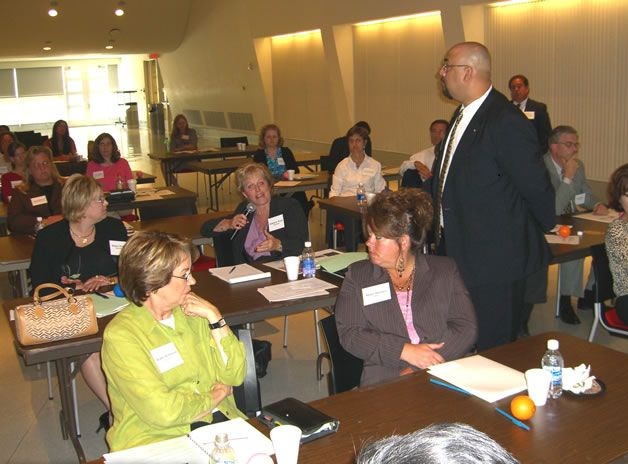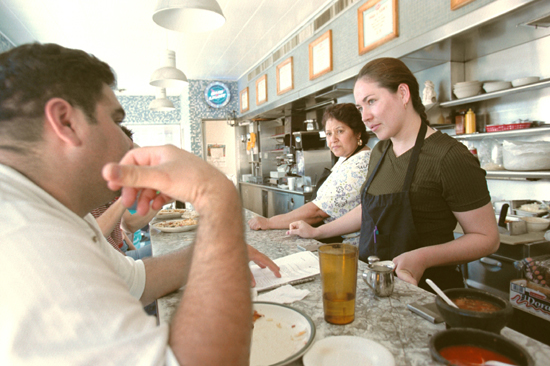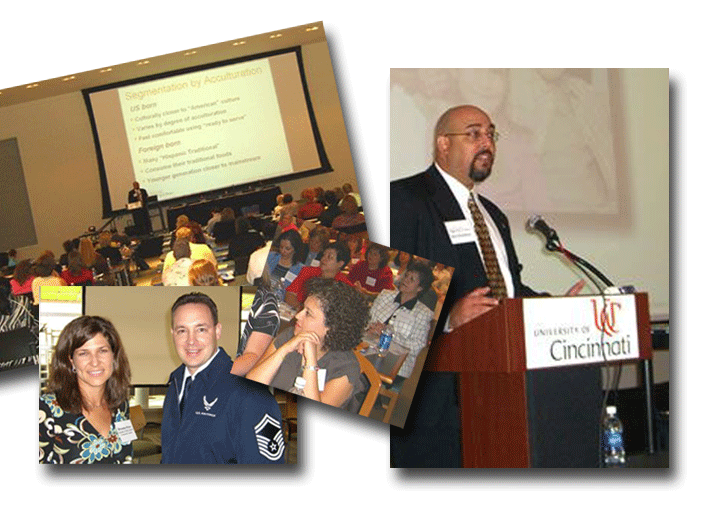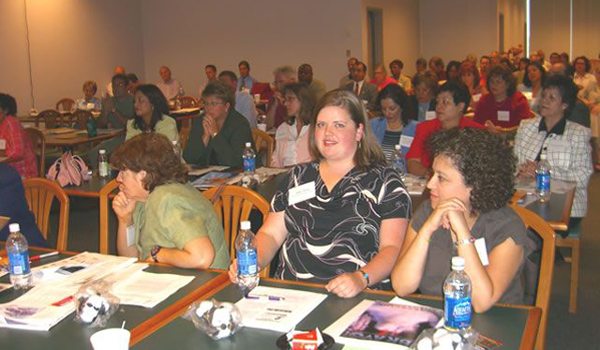The Springs’ diverse community is thriving.
“There’s a lot of people – every day I see new people come to the store I’ve never seen. And I’ve been here for 16 years,” said Ulloa.
But the segment whose growth outpaces all others is that of the local Hispanic population.
According to a report put out by the Hispanic- owned LaVerdad Marketing and Media company, Hispanic growth in Sonoma County is occurring at the rate of about 8 percent a year, double the rate of the county’s total growth and four times the rate of other ethnicities.
In Sonoma Valley alone, the burgeoning Hispanic demographic is an economic force to be reckoned with – roughly “30 percent of our population,” said Ellen LaBruce, executive director of La Luz Bilingual Center.
What’s more, consumer spending by Hispanics is
rapidly on the rise; personal-consumption
spending by Hispanics should increase at an average rate of 9.1 percent – exceeding the national growth rate of 6 percent, according to LaVerdad’s report.
Hispanic buying power is expected to hit the $1 trillion mark by 2010.
More money also means more Latino-owned businesses, of which LaBruce said she’s definitely seen an increase in during the last year.
“All of a sudden the numbers are working out – there are more people (more opportunities) to make owning a business economically feasible… it’s like the perfect storm,” she said.
“You need a lot of money (and overhead) to open a business,” admitted Alfonso Gonzalez. But people are realizing the benefits of opening their own stores, he said. More Latinos are making more money, he said, and with more money comes more investment opportunity.
A mounting number of resources and support factors offer a springboard for Springs growth – and for all business owners, not just Latinos.
Fundamental improvements along the corridor, from sidewalks to lighting and facilities upgrades, increase the attraction for incoming businesses. Citizen input has been critical, said LaBruce.
“Now that we have Springs Redevelopment Advisory Committee … we will continue to see improvement, and that provides more opportunities for businesses of all stripes,” she said.
And from basic community improvements to granting loans to small businesses, the county is really doing something with its redevelopment dollars.
The agency is definitely “not sitting on their funds,” said Pam Gibson, economic development officer for the City of Sonoma. Created by a partnership between the City of Sonoma and the Sonoma Valley Chamber of Commerce, Gibson’s position technically focuses on businesses within Sonoma’s city limits but at the same time, “the partnership (between the city and chamber) has always recognized the benefit of prosperous business outside the city limits … and it recognizes that (this growth of Hispanic business) is occurring,” said Gibson.
She recently spoke to a class of English-language learners at the Sonoma Valley Adult School about what it takes to start their own business.
The more resources and information that get out there, the better, she said. Gibson said one challenge for entrepreneurs who have come from another country is that “we tend to be an extremely overregulated society.” With a complex web of rules on everything from signage to ADA regulations, a successful business owner from Mexico may have three times as many hoops to jump through here as they did in their native country.
Recently at the chamber, “We’re starting to translate to translate our business start-up and resource packets into Spanish,” Gibson said.
And with the chamber’s bilingual representative, Yaquelin Alvarez, it is more equipped to assist Spanish- speaking members with translating marketing materials, filling out forms and other business needs.
The bottom line behind the proliferation of Springs businesses is in meeting the needs of the neighborhood.
“If someone comes from a Spanish-speaking household, often they feel more comfortable going to a small store where they are known and where Spanish is the spoken language,” said LaBruce.
It’s also the interpersonal connections and familiar faces in a small store that build a loyal clientele.
“We build friendships with the customers,” said La Morenita owner Gonzalez. He also keeps his prices as affordable as possible to make his customers happy. There’s also the attraction of familiar imported brands – in which many of the Springs markets specialize.
These days it’s not just the mom-and-pop grocery that’s accommodating Hispanic buyers, LaBruce said.
From large corporate chains to national banks, more companies are lining up to get a share of the expanding Latino market.
Sonoma Valley Bank’s new Springs branch, Banco de Sonoma, wouldn’t have opened if the bottom line indicated it wouldn’t have been profitable, said LaBruce. “Even in Safeway and Ralphs you’re seeing more foods that are culturally attractive to Latino customers … As a growing market, it’s worth a business owner’s while. It’s hard to walk away from 30 percent of the (local) population.”
As for Springs area retailers, many don’t want to give the impression they only cater to the Latino population; indeed, many store owners’ want to reach a much broader consumer base.
“This store has everything – meat, produce, imported goods from Mexico – people can get everything in one spot,” said Carmen Ulloa of Carniceria La Favorita.
“A lot of Anglo customers come here, too,” she added. “I was actually very surprised (at how many).”
Slated to open later this month is Juan Villanueva’s “Cactus Ice” ice cream parlor; he envisions it as a neighborhood oasis with something to tempt everyone’s palate. Having previously worked in the printing business, it is Villanueva’s first store; it’s taken him two years to find a good location and jump through all the permitting hoops.
In addition to traditionally flavored ice creams, he’ll also offer well-known delights from different regions of Mexico – such as “avocado” and “rompope” flavored ice creams, snow cones and smoothies. The store will also sell coffee, espresso, burritos and sandwiches.
It definitely fills a neighborhood niche, he said.
“There’s no ice cream shop for people here. I talked to people and they liked the idea. (As of right now) there’s no place to have a drink or hang out,” he said. On a hot day, it will be a perfect watering (and icing) hole for pedestrians.
Pedestrian-friendly businesses are also popular when many residents in the area don’t own cars.
Quick, convenient neighborhood stores are more likely to capture the dollars of those who walk or ride their bikes.








